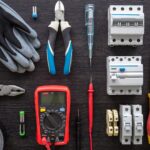In our increasingly electrified world, a dependable power supply isn’t just a convenience—it’s a necessity. With the growing reliance on smart energy systems and home automation, ensuring your home battery backup is functioning optimally is critical. This guide sheds light on key alerts and maintenance strategies to keep your system running smoothly, offering peace of mind and operational efficiency.
- Uncover the significance of critical alerts in your home battery backup system and learn what each alert indicates for system stability.
- Delve into the management and resolution of common alerts to prevent potential disruptions and failures.
- Gain insights into established maintenance schedules and practices that help optimize system status and longevity.
- Explore advanced tools and innovative techniques essential for maintaining home battery backup efficiency and effectiveness.
By the end of this guide, you’ll be equipped with indispensable knowledge to expertly navigate critical alerts and ensure your home battery backup system remains a robust guardian of your power needs. Stay ahead with proactive measures and enjoy a seamless, uninterrupted power experience.
Understanding Home Battery Backup Critical Alerts: System Status and Maintenance Essentials
Home battery backup systems have become essential for ensuring a constant power supply, especially during unexpected outages. To effectively manage these systems, it is crucial to understand the various critical alerts they can generate. These alerts are designed to safeguard your system and maximize its reliability.
Key alerts in home battery backup systems often include “Battery Overcharge”, “Low Battery”, “System Overload”, and “Temperature Anomalies”. Each alert plays a vital role in preserving the system’s health and preventing potential damages.
An alert such as “Battery Overcharge” signals that the battery is receiving more charge than it can handle. Ignoring this could lead to reduced battery life or even safety hazards. On the other hand, a “Low Battery” alert warns that the system might not have enough stored energy to power essential appliances during an outage.
Understanding these alerts allows system users to take timely action which is crucial for maintaining system efficiency. Regular monitoring and prompt responses to these critical alerts can significantly enhance the longevity and reliability of your home battery backup system.
Section 1.1: Identifying and Managing Common Alerts
Identifying and managing common critical alerts is a fundamental aspect of home battery backup system maintenance. By recognizing and addressing these alerts promptly, you can prevent disruptions and ensure sustained power availability.
“System Overload” is a prevalent alert indicating that the connected load exceeds the system’s capacity. Reducing the load or upgrading the system’s capacity may be necessary to prevent failures.
“Temperature Anomalies” are another common alert, which can arise when the system’s components are operating outside their optimal temperature ranges. Managing this alert might involve improving ventilation or adjusting system settings to prevent overheating.
A simple yet effective approach to managing these alerts involves establishing a routine check-up schedule. Regular diagnostics can help in early detection and management, reducing downtime and increasing system lifespan.
Utilizing home battery backup monitoring software can also aid in tracking alerts efficiently, providing timely notifications and insights into the performance and health of your system.
Optimizing System Status through Regular Maintenance
To ensure the ongoing reliability and efficiency of your home battery backup system, regular maintenance is essential. Consistent upkeep not only prolongs the life of your investment but also enhances its performance, providing a steady power supply when you need it most. Effective system maintenance involves adhering to a regular schedule and following specific procedures designed to address potential issues before they lead to critical failures.
Begin by setting up a maintenance routine based on manufacturer recommendations. This typically involves monthly visual inspections for any signs of wear or damage, such as loose connections or corrosion around battery terminals. Such issues can impair system performance and lead to unexpected outages.
Moreover, checking and cleaning the ventilation around the battery backup system is vital for preventing overheating, which can degrade the batteries over time. Invest time in reviewing system alerts and logs, as these can offer early warnings of potential problems, allowing for prompt action.
Incorporating these maintenance strategies helps ensure your battery backup system functions optimally, offering peace of mind and system longevity.
Section 2.1: Tools and Techniques for Effective Maintenance
Arming yourself with the right tools and knowledge can significantly enhance your ability to maintain a home battery backup system efficiently. Basic tools such as a multimeter are invaluable for measuring voltage and ensuring the system is charged adequately.
In addition to traditional tools, consider integrating technology that supports smart energy management. Such systems can offer detailed metrics on battery performance and energy consumption trends, aiding in more informed maintenance decisions.
Another key technique is battery calibration, which involves fully charging and then discharging the battery to reset the state-of-charge sensor. This process can improve accuracy in energy readings and system efficiency.
By employing these essential tools and techniques, you ensure not only the effective performance but also the durability of your home battery backup systems.
Proactive Measures: Enhancing Home Battery Backup System Efficiency
Incorporating proactive strategies is vital for enhancing your home battery backup system’s efficiency. Taking these measures not only ensures a continuous power supply but also boosts the overall longevity and performance of the system. With the ever-increasing reliance on renewable energy sources, efficient management of battery backup systems becomes even more critical.
One of the fundamental approaches to achieving optimal system efficiency is through the integration of smart management systems. These systems offer real-time monitoring and control capabilities, allowing homeowners to better understand their energy consumption patterns and make informed decisions. By utilizing smart technology, you can easily automate the process of charging and discharging the batteries, ensuring that they are used in the most effective manner possible.
Furthermore, staying up-to-date with the latest technology upgrades is essential for maintaining efficiency. Advances in battery technology, such as lithium-ion and solid-state options, offer significant improvements over traditional lead-acid batteries. Upgrading to these newer technologies can result in higher energy density, faster charging times, and increased lifespan, all contributing to an enhanced backup system performance.
The integration of renewable energy sources, like solar panels, with your home battery backup further boosts efficiency. Solar energy allows the system to harness and store clean energy for later use, reducing reliance on conventional electricity and promoting sustainable energy consumption. Combining solar power with an advanced battery management system creates a harmonious and efficient solution for energy needs.
Adopting these proactive measures not only optimizes your battery backup system but also aligns with modern energy goals, promoting sustainability and resilience. By focusing on smart management and technological advancements, homeowners can enjoy a continuous power supply while minimizing environmental impact.
Frequently Asked Questions about Home Battery Backup Systems
What are critical alerts in a home battery backup system?
Critical alerts are notifications that indicate significant issues like low battery levels, connectivity problems, or system failures that require immediate attention.
How often should I schedule maintenance for my home battery backup system?
Regular maintenance is recommended twice a year to ensure your system is in optimal condition and to prevent potential issues.
What tools are essential for maintaining a battery backup system?
- Multimeter
- Screwdrivers
- Batteries
- Voltage tester
are essential tools for effective maintenance of the system.
Can I enhance the efficiency of my backup system with technology?
Yes, implementing smart management systems and regular upgrades can enhance system efficiency and longevity.
Why is it important to monitor the system status regularly?
Regular monitoring helps identify potential issues early, ensuring continuous power supply and system reliability.





